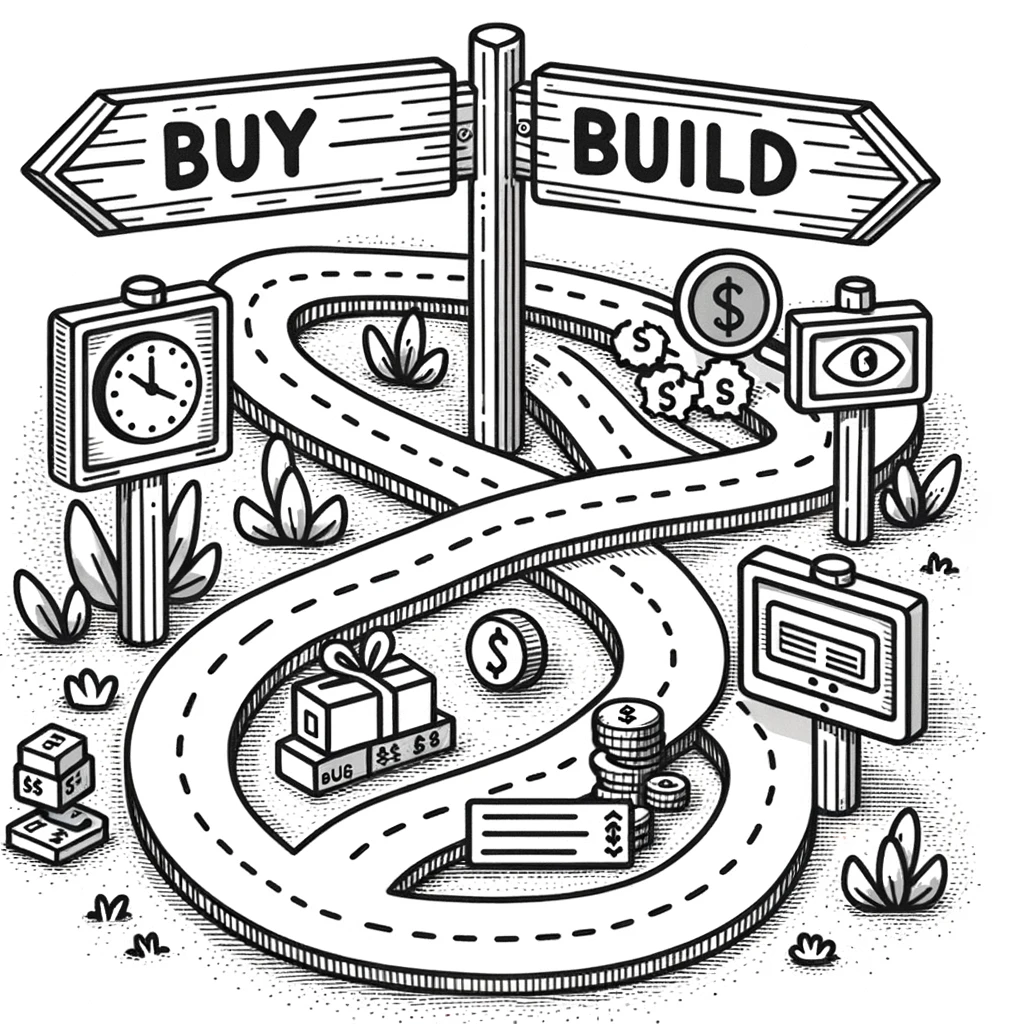The Consideration Guide of Buy vs Build Software

In today's digital age, businesses constantly face the dilemma of whether to purchase commercial off-the-shelf software (COTS) or invest in building custom solutions in-house. This decision, often termed as the "buy vs build" debate, carries significant implications for operational efficiency, cost management, and strategic growth. Let's delve into the key considerations that can guide this crucial decision.
1. Cost Implications
Buy: Purchasing software involves an initial cost or subscription fee. Additionally, there might be licensing fees for extra users or advanced features. Over time, costs can accrue from upgrades and maintenance.
Build: Building software in-house requires investment in development, including salaries and potential contractor fees. Infrastructure, developmental tools, and other licenses can add to the bill. Plus, don't forget the ongoing maintenance and upgrade expenses.
2. Time-to-Market
Buy: Ready-made solutions can be quickly deployed, offering immediate functionality. However, time may be spent on researching the best software, evaluating its fit, and training the staff.
Build: Custom development is time-consuming. From gathering requirements and designing to testing and deployment, the process can stretch over months or even years.
3. Customization and Adaptability
Buy: Off-the-shelf software may not cater precisely to your unique business processes or needs. You are limited to what the vendor offers.
Build: Custom-built solutions can be tailored to your exact specifications, ensuring alignment with business objectives and providing adaptability as needs change.
4. Scalability Concerns
Buy: The ability to scale depends on the software vendor. Growth may mean additional costs or even migrating to a new solution.
Build: Custom software can be designed with scalability in mind, allowing easy accommodation for future growth.
5. System Integration
Buy: Integration with your existing systems is crucial. Off-the-shelf software may pose challenges, depending on its compatibility and available APIs.
Build: Building in-house means you can design the software to seamlessly integrate with your current infrastructure.
6. Support and Maintenance
Buy: You're at the mercy of the vendor's support system. This might be limited or come with additional fees.
Build: An in-house team can provide immediate support, troubleshooting, and fixes, ensuring minimal downtime.
7. Control and Security
Buy: Your data and security protocols are in the vendor's hands. Their security measures might not align with your standards.
Build: Building software in-house gives you control over data handling and allows the implementation of bespoke security measures.
8. Long-term Viability
Buy: There's always a risk of the software becoming obsolete, or worse, the vendor shutting down. You're also dependent on them for updates.
Build: You control the software's lifecycle and can adapt to technological shifts at your own pace.
9. Intellectual Property & Competitive Edge
Buy: You don't own the intellectual property, and competitors might be using the same software.
Build: Owning the software can provide a competitive advantage, especially if it offers unique functionalities.
10. Skill Set and Resource Availability
Buy: No need for specialized skills in-house.
Build: Requires a team of skilled developers, project managers, and continuous training.
Wrapping Up
The "buy vs build" decision is multifaceted and depends on your business's unique needs, resources, and future plans. Sometimes, a hybrid approach, combining both purchased and custom-built software, offers the best of both worlds. Whatever you choose, ensure that it aligns with your long-term strategic vision and provides the flexibility to adapt to the ever-evolving digital landscape.